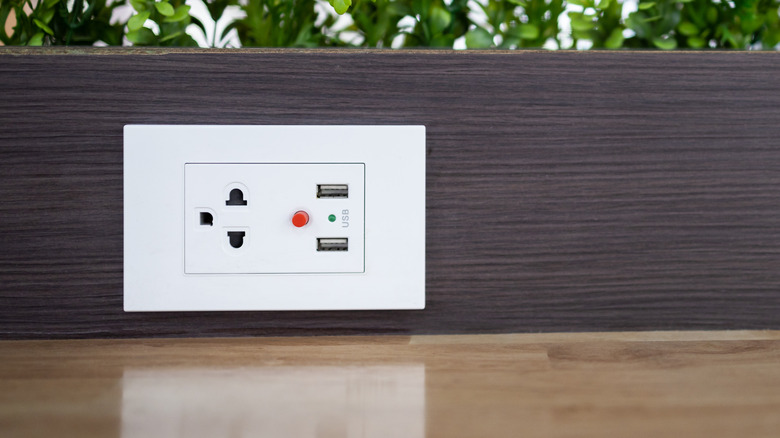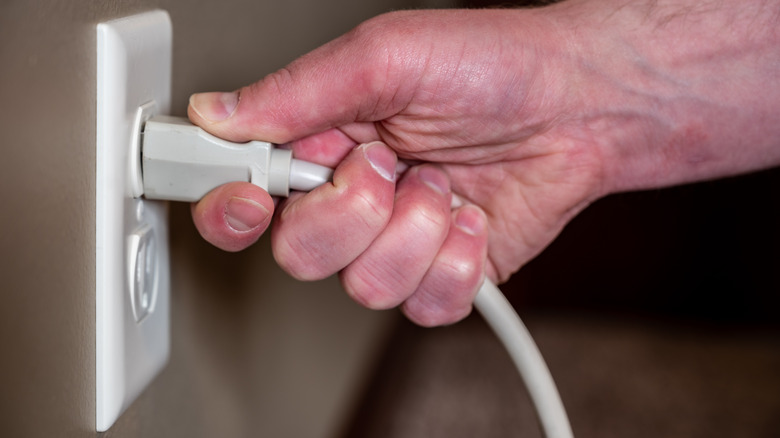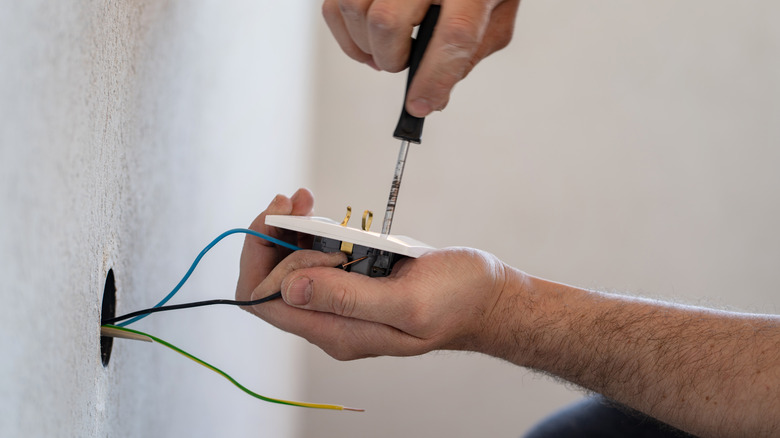How To Easily Swap A Two-Prong For A Three-Prong Outlet
If you're living in an older home that hasn't been updated recently, you've likely been faced with the issue of a two-prong outlet. These used to be the most common outlets available, but as our devices and appliances increase in power, having a third hole for a grounding prong has become more common. Instead of investing in converters that allow your cords with three prongs to fit properly, consider replacing the outlet altogether.
Fiddling with electricity can be an intimidating DIY project, but luckily, there's a quick fix that can make your old electrical outlets safer and more convenient. Fully rewiring your house and adding ground wire is the best option, but it's an expensive job best left to the professionals. If that's not possible for you right now, look to a ground-fault circuit interrupter in the meantime. This will give you a bit more protection and allow you to use any of your three-prong cords without an issue.
Why is having room for three prongs important?
For most people, having two-prong outlets is more of an inconvenience than anything else, but they can actually present some dangers in your home. According to Orange Electric, the third hole on an outlet is connected to a grounding wire. In the case of an electrical overload, this wire can redirect the excess charge away and safely neutralize it, saving whatever you have plugged in — or your hand as you go to plug something in — from damage. Each time there's a power surge, you could be risking electrocution or a house fire.
A ground-fault circuit interrupter isn't quite as effective as fully rewiring, but it does remove the immediate risk of electrocution and allows you to install three-prong outlets. These devices essentially act as an emergency shutoff, reading the amount of energy flowing in and out of a circuit and stopping the flow if there are any irregularities (via the Electrical Safety Foundation International).
How to make the switch
Installing one of these devices does include a bit of rewiring, but the process is fairly simple. To start, make sure the outlet you're replacing is turned off on the breaker panel, and then completely unscrew and remove the existing two-prong outlet (via Cutler Homes). From here, you should just be left with a few exposed wires. Grab your ground-fault circuit interrupter, and attach the black wire to the brass terminal and the white wire to the silver terminal. On the back of the box, there should be a hole. Put the green screw through the hole, wrap the grounding wire around the screw, and then tighten. After you attach one end of the grounding wire to the screw, attach the other to the green grounding terminal on the ground-fault circuit interrupter.
From there, all you need to do is get everything back into the wall and put on a new plate. When you're dealing with electric currents, always make sure you're consistently checking that the correct power supply is turned off, and, after you're done, you're properly testing with a circuit tester. This is a much simpler switch than full rewiring, but safety is always key, even on a smaller project like this.


